By using ChatGPT 4 and an efficient prompt design, I was able to search, analyze, compare and generate specific information about the job market in Canada & the UK for Mental Health Nurses.

One morning I called my mother to check in on her; I am in Canada (at the time of writing this) and she is in the UK, so there is a 5hr time difference between us. The conversation came up about her possibly emigrating to Canada in a couple years; I took the stance that she was better off staying in the UK & working in her profession than trying to do that in Canada. Her stance was Canada needs nurses and she can be closer to family. My mother is in the second year of her Mental Health Nursing Degree and is currently doing placements at hospitals local to her city. Knowing my mother, I would have been going back and forth trying to defend my stance and she would be throwing out ‘buts’ & ‘ifs’ to defend hers. Albeit the conversation ended with us mutually agreeing that its too soon to consider working in another country – Like a said, she is still a studying.
After the conversation ended I decided search for information online to support my view that my mother was better off working in the UK. This led me to find the hourly wage and job demand for mental health nurses in Canada. Usually I would have just screenshotted the page and forward it to my mother for her to see. The webpage showed the prospects of what her career could earn her in regions across Canada and how much demand there was for it.

I stopped myself after having a different train of thought; why not input the data into GPT, ask it to make a comparison with the UK job market and then analyze the findings across the two. This is the step by step process of how I used ChatGPT 4 to analyze the job prospects for Mental Health Nurses in Canada & the UK.
I started with my data that I found on the Canadian Government’s job bank website. This provided me with recent job listings & wages across the province & territories in Canada, as shown below.
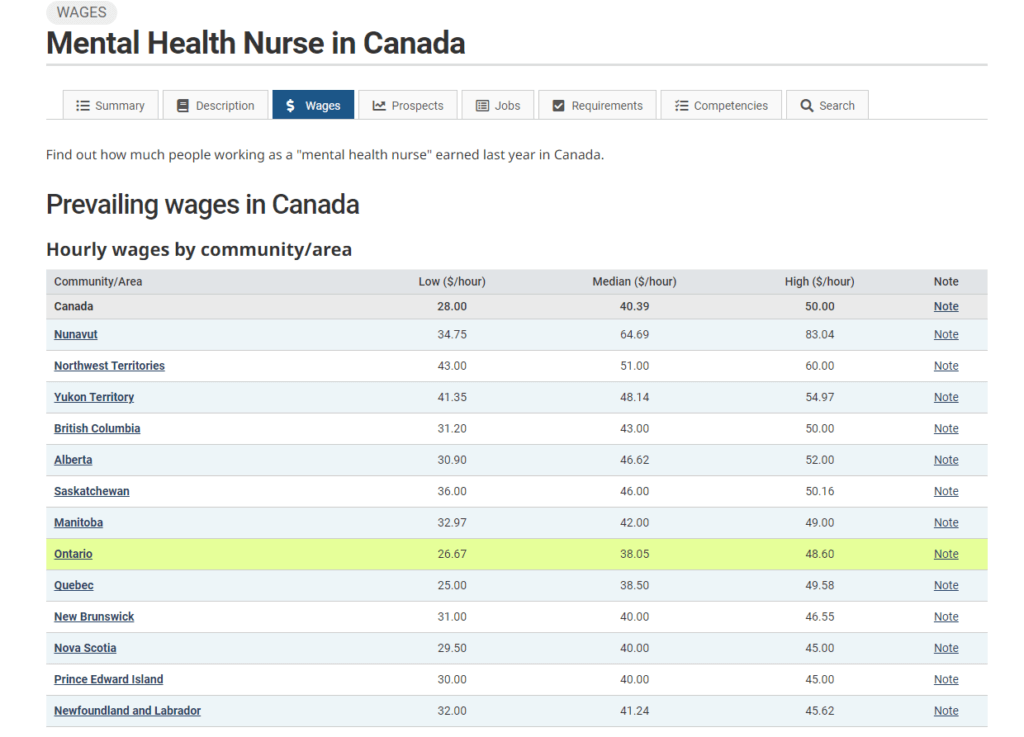
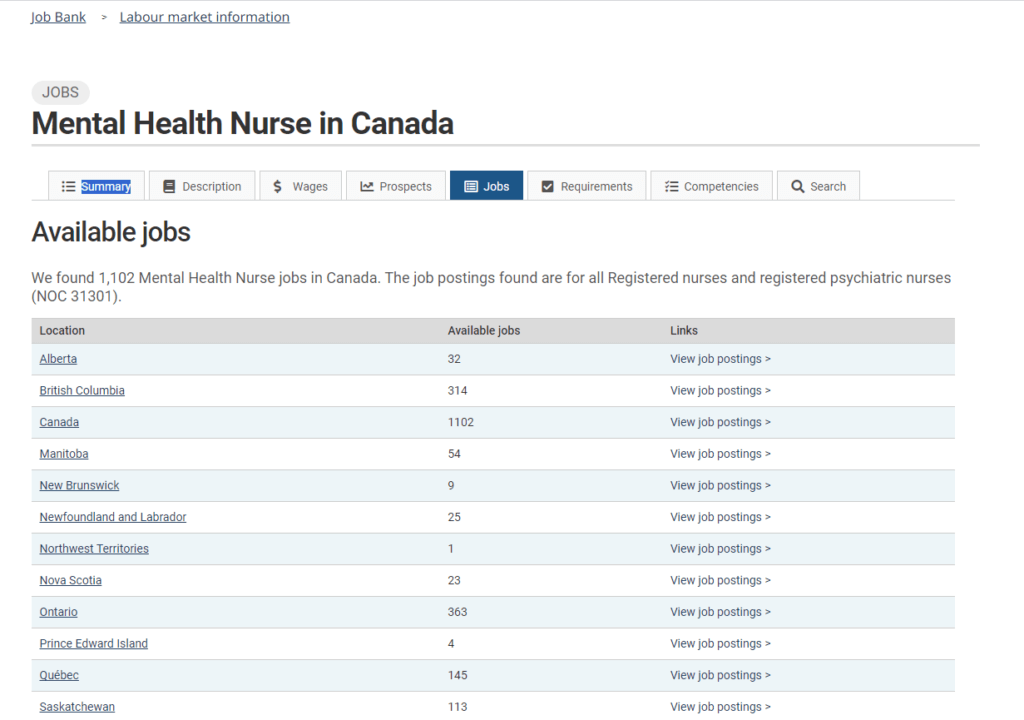
I took screenshots and uploaded both images to GPT 4 and then designed my prompt in a way which would allow the GPT to: Search, Analyse, Compare & Generate. Not necessarily in that order but I knew those where the specifics of what I needed it to do. Since the tasks would be done based on data (listed in the format of tables), it was a no-brainer to have the GPT act as a data analyst. I structured the prompt in a loop, you can read about what this means here.
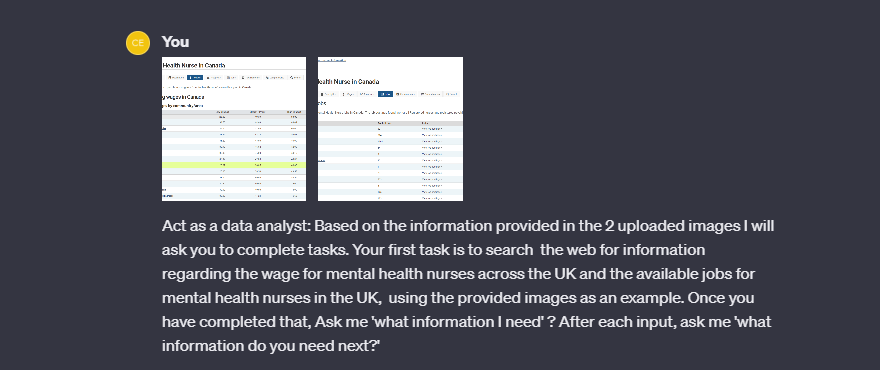
As you can see in the image above, I uploaded both images, then I typed in my prompt with the looping method to streamline further tasks efficiently. Here is the chatbots response to my prompt.
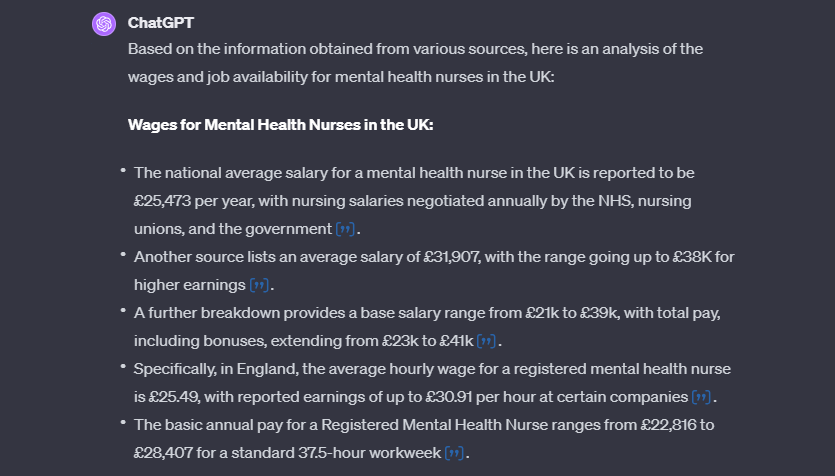
By asking the GPT to use the uploaded images as examples it was able to search for two specific data points: 1) The wages of mental health nurses in the UK 2) The jobs availabile for mental health nurses in the UK.
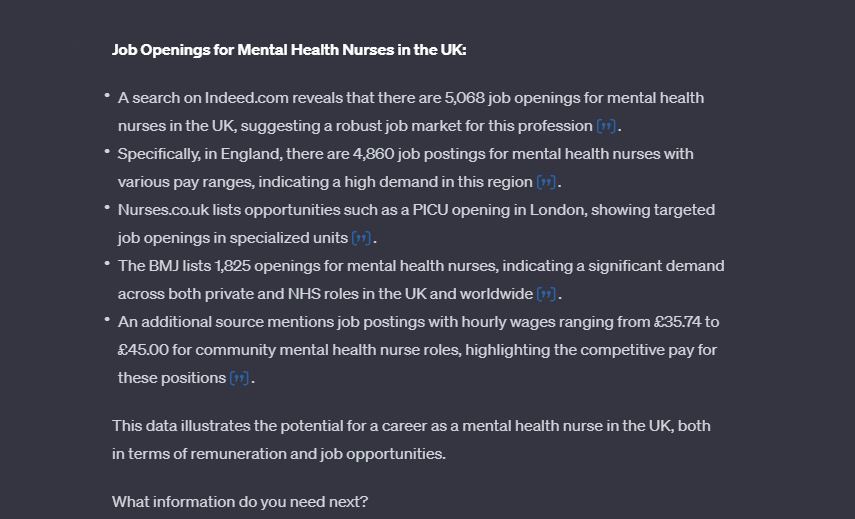
As you can see at the end of this task the chatbot asked me what information I needed next? Designing the prompt in a loop was crucial because it meant that the flow of conversation with GPT is now cohesive and continuous. The GPT knew to expect that I would need more information on the tasks it was given in the initial prompt. The information that I needed next was a comparison between both countries wages & job openings. Since Canadian wages was in dollars, I wanted this converting into pounds Stirling to make it easier to compare against the UK and I wanted the information in the format of a table.

That was my original tasks, but I then iterated it to simplify the table to the overall average rather than listing them specifically by regions. Here is what the GPT output came back with.

I now have the complete data needed in a table that shows the average hourly wage for a mental health nurse in the UK and Canada alongside the total job openings in both countries. But overall the reason that I wanted this information was to work out which country my mother would be better off working in. So I decided to ask GPT for its input…

Here’s what GPT had to say…
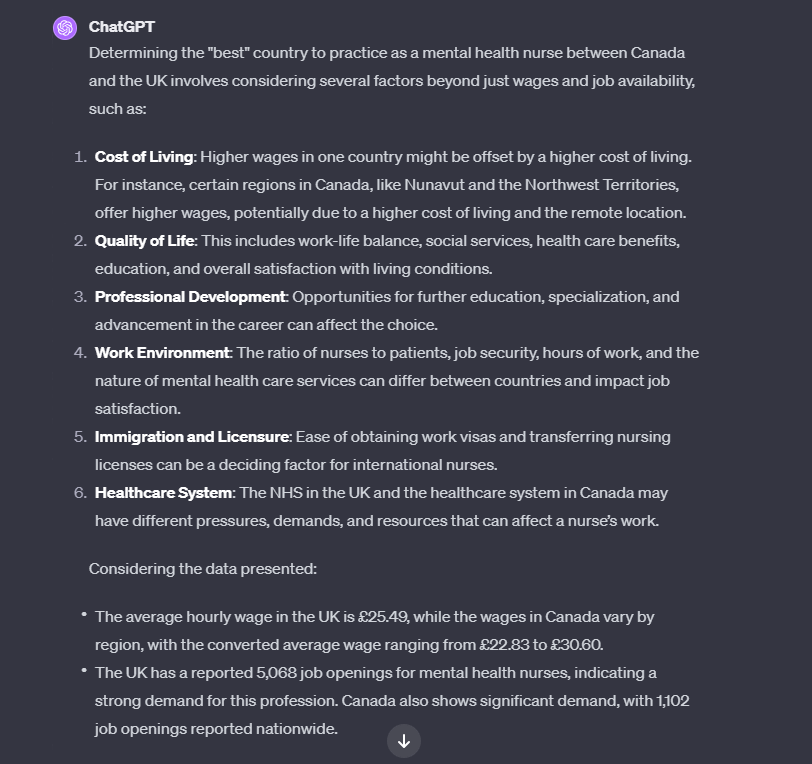
As you can see GPT remained objective in its output and gave me other factors to consider rather than just looking at the data and deciding which country is best, since both countries offer similar wages and both have a demand for mental health nurses. The UK has a higher number or positions available in the country as a whole compared to Canada. Canada’s wage is £1.06 higher on average than the UK but that doesn’t affect the price of bread so to speak. GPT also suggested considering factors like: the support for healthcare professionals, the communities served, the potential for career growth, and personal lifestyle preferences.
I will be providing the findings from my data analysis with GPT to my mom, I won’t be giving her as much details as I have used in this posts. This was done to showcase how from a conversation with my loved ones, I was able to use ChatGPT to carry out a tasks which required skills that I do not possess, i.e data analyzing and converting currencies. Using ChatGPT eliminated the excess time spent online searching websites and converting currencies and creating a table to input the data one by one. This prompt input can be used with GPT 3.5 but bare in mind that it cannot conduct a web search and it is only accurate as of September 2021.
Thanks for reading this blog post! I hope it helps you if you ever need to input similar prompts or tasks to GPT.

Leave a Reply